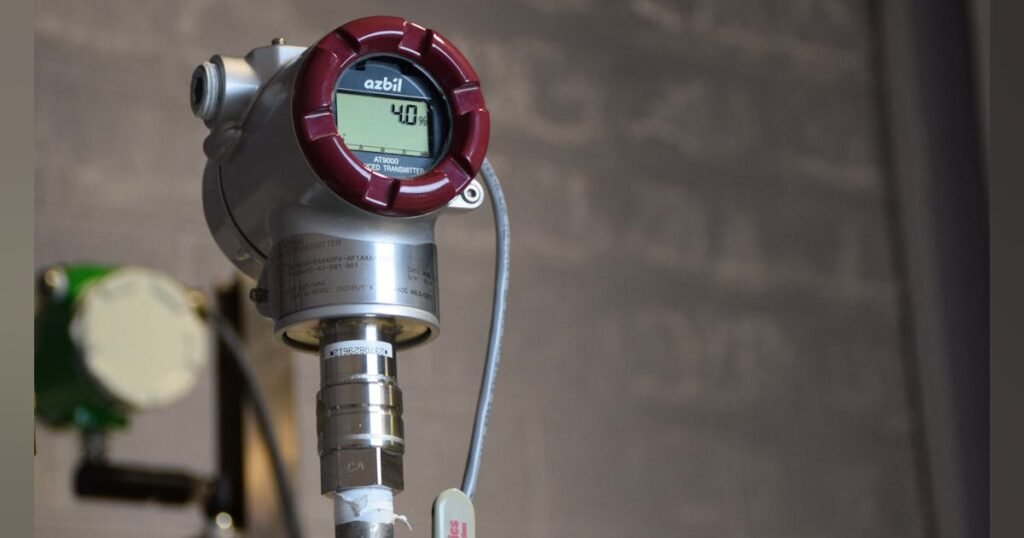In today’s manufacturing processes, accuracy and productivity are imperative, and pressure transmitters are critical in their realization. This blog post covers their functions, development history, classification, usage, and future development, which is precisely helpful for the manufacturing engineer and industrial technical personnel in choosing proper pressure transmitters and summarizing from case examples.
The History of Pressure Measurement in Manufacturing
Old Methods of Pressure Measurement
In the past, the ways of pressure measurement were quite primitive. The initial stages involved the use of simple manometers and mechanical gauges. These tools, which had served the field tremendously in earlier years, therefore did not have the needed accuracy in providing solutions for precision manufacturing today.
Transferring to Electronic Pressure Sensors
It is noteworthy that the discovery of electronic pressure sensors opened up the field to enhanced development. These sensors gave better and accurate quantities as compared to the old sensors that were in use. Their incorporation into manufacturing systems provided a significant enhancement from mechanical gauges and prompted the advancement of today’s ever sophisticated pressure transmitters.
Modern Pressure Transmitters
Contemporary pressure transmitters and digital pressure gauges are real wonders of science. They deliver not only very precise results but also the possibility of transferring data to other parties. This evolution has provided manufacturers with better ways of assessing processes at real-time, improving organizational operations and subsequently boosting productivity.
The Function of Pressure Transmitters in Increasing the Level of Safety
Better Process Control
Pressure transmitters, as one of the key instruments in process control across manufacturing industries. They give the operational data in real-time which means that adjustments can be made in case the processes are not to flow well. Such control is beneficial in observing the quality of products and avoiding unnecessary wastage, hence achieving efficiency.
Ensuring Operational Safety
Safety is a priority in production in manufacturing organizations. Used in the detection of pressure levels and issuance of alarms when the levels are high, pressure transmitters reduce risks of accidents. They are especially important in sectors that involve handling of dangerous elements as any small differentiation in pressure may cause severe disasters.
Enhancing Energy Efficiency
Manufacturers are very much worried about energy use since it is one of the greatest expenses. Pressure transmitters play their role in increasing energy efficiency by supplying information that is used to optimize the processes going on. For instance, in HVAC systems, they ensure that pressure levels are maintained and regulated hence preventing wastage of energy and cutting on costs.
Varieties of Pressure Transmitter
Absolute Pressure Transmitters
An absolute pressure transmitter indicates pressure in reference to a perfect vacuum. They are applied in production lines of industries that require high levels of pressure measurement like aviation and electronics industries.
Gauge Pressure Transmitters
Relative pressure or differential transmitters measure pressure with relation to the atmosphere pressure. They are are used widely in applications where amplitude variation of pressure must be controlled and maintained within upper and lower levels, for example in the fluid power systems including hydraulic equipment.
Differential Pressure Transmitters
Differential pressure transmitter measures two points of pressure and is the difference between the two pressures. Some of the common applications are found in processes such as fluid flow measurement, level indication in tanks and filter checks. Due to the fact that they can accurately measure differential pressure, they are very useful in most industrial applications.
Key considerations when choosing the right pressure transmitter
Accuracy and Range
In addition, the level of accuracy of the pressure transmitter should be a top consideration when making the selection. In this regard, the chosen device has to be accurate and give the right readings depending on the pressure range of work. The requirements should reflect the process in the plant and engineers must look for a transmitter that complies with the said requirements.
Compatibility with Process Fluids
The selection also depends on the compatibility of the materials used in the construction of the pressure transmitter with the process fluids. Aggressive fluids can damage the transmitter hence providing wrong or no reading at all. Hence, attention must be paid to the selection of materials that would be suitable for the conditions of the given application.
Integration with Control Systems
Advanced technology in the aspect of automation and control systems is evident in today’s production floor. The best pressure transmitter should easily suit the existing processes in the plant by supplying process controlling data. Compatibility with HART, PROFIBUS or Modbus communication drive should also not be an issue.
Future and emerging technology in Pressure Transmitter
Integration with IoT
A lot of industries are experiencing a disruptive change in their nature, through what is known as the Internet of Things, or IoT. Wise pressure transmitters that are designed with IoT incorporated into the pressure transmitter include real time monitoring and control, GSM base remote pressure monitoring, pressure transmitter health monitoring, and analytic tools. This integration improves the work flow and supports the application of preventable maintenance solutions.
Sensor Materials And Advanced Materials
Therefore improvements in the fields of material science and sensor engineering are expected to result in improved pressure transmitter designs. These innovations then intended to increase the mean time between the periods when a device has to be recharged and to enhance their durability in strenuous industrial conditions.
AI and Machine learning applications
Big data analytics and artificial intelligence (AI) are being used to analyze operational data that is being captured from the pressure transmitters. They can see trends, anticipate failure, and discover processes for optimizing efficiency offering the manufacturer the knowledge required for boosting productivity and cutting down on time lost to machinery faults.
Conclusion
Thus, pressure transmitters are essential components of contemporary production processes. They increase safety, productivity and offer the degree of control that is essential in preserving the quality of products. Thus, by increasing the awareness of various types and uses of pressure transmitters, manufacturing engineers and industrial technicians can make better decisions in their operation.

